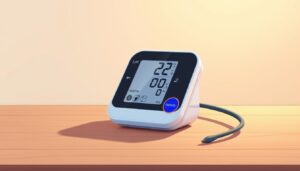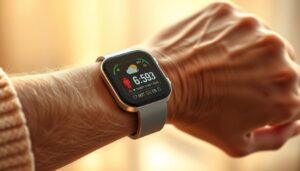Staying safe during unexpected events is vital, especially as we age. Modern tools now offer multi-layered protection that goes beyond old-fashioned radio warnings. These solutions blend text messages, app notifications, and even social media updates to keep you informed.
Today’s options adapt to your lifestyle. You can receive critical updates through devices you already use daily, like smartphones or tablets. This flexibility ensures you’re never left in the dark during severe weather, medical issues, or other urgent scenarios.
Choosing a reliable setup means balancing simplicity with advanced features. Look for services that provide backup options if Wi-Fi fails or power goes out. Customizable settings also let you prioritize alerts that matter most to you, reducing unnecessary stress.
Key Takeaways
- Modern solutions combine text, apps, and social media for instant updates
- Backup communication methods ensure reliability during outages
- Customizable features reduce confusion during high-stress situations
- Prioritize systems that match your daily routines and tech comfort
- Multi-channel alerts provide redundancy for critical notifications
Understanding the Role of Emergency Alert Systems in Senior Safety
The advancement in communication tools offers seniors multiple ways to receive vital information during urgent moments. Modern solutions act like invisible safety nets, connecting local authorities, national public safety groups, and your personal devices through communication channels you already trust.
Overview of Modern Alert Systems
Today’s networks blend TV broadcasts, smartphone messages, and internet updates to keep you informed. Organizations like FEMA work with state agencies to create location-specific warnings. These messages get distributed simultaneously across radio stations, mobile apps, and digital billboards.
Wireless technology eliminates tangled cords while letting updates follow you anywhere. Some setups even use battery backups to function during power outages. This layered approach means you’ll likely receive critical notifications through at least two devices.
How Timely Alerts Enhance Your Peace of Mind
Instant updates give you precious minutes to prepare when storms approach or health risks emerge. Monitoring tools confirm that information reaches your phone, email, or smart speaker successfully. During network congestion, priority routing ensures your alerts jump to the front of the line.
Customizable settings let you choose which updates matter most. You might prioritize weather warnings over traffic advisories, for example. This personalization reduces unnecessary stress while keeping essential communication clear and actionable.
Key Benefits of Reliable Emergency Alerts for Seniors
Timely information transforms how you handle unexpected events. Modern tools deliver life-saving updates through methods that match your daily habits, creating a safety net that works quietly in the background.
Rapid Response in Critical Situations
When severe weather strikes or health risks emerge, seconds matter. Advanced networks push verified warnings to your phone, TV, and email simultaneously. This multi-channel approach means you’ll get updates even if storms knock out power lines.
During natural disasters, location-specific guidance appears instantly. You might receive evacuation routes tailored to your neighborhood or shelter-in-place instructions during security threats. These clear directions help you act decisively when stress levels rise.
Building Confidence in Daily Safety
Knowing you’ll receive accurate updates fosters independence. Trusted sources like local authorities send official notifications, cutting through social media rumors. This reliability lets you maintain routines without second-guessing every news flash.
Customizable settings filter out irrelevant noise. Focus on alerts that matter most – whether wildfire smoke advisories or flood watches. This personalized approach reduces anxiety while keeping preparedness habits sharp for various emergencies.
Exploring emergency alert systems: Essential Features for Seniors
When every second counts, intuitive design becomes your greatest ally. The best safety tools blend seamlessly into daily life while offering robust protection. Let’s explore what makes these solutions both effective and easy to use.
User-Friendly Interface and Accessibility
Look for large, tactile buttons and bright displays that cut through visual clutter. Some options feature pendants or belt clips you can activate with one press. These wearable formats let you call for help from any room without fumbling with complex controls.
Modern setups deliver updates through voice announcements and scrolling LED text. This dual approach accommodates varying hearing or vision needs. For example, systems like AlertWave broadcast messages through wireless speakers while displaying instructions on digital boards.
Automated features handle the heavy lifting by connecting to weather radios or motion sensors. You’ll receive storm warnings or fall detection alerts without pressing a single button. Remote access lets family members check your system’s status or send urgent messages through their phones.
Choose wireless designs with battery backups to maintain functionality during outages. Solutions requiring minimal installation ensure you won’t need technical expertise to stay protected. The right setup feels familiar rather than intimidating – like a trusted neighbor ready to assist.
Evaluating Communication Channels and Technology Integration
Modern safety solutions rely on robust communication networks to keep you protected. These tools blend traditional and digital methods, creating overlapping pathways for critical updates. Let’s explore how smart integration keeps you connected when it matters most.
Multi-Channel Notifications for Uninterrupted Alerts
A multi-channel approach sends warnings through your smartphone, radio, and social media at once. This redundancy means you’ll still get updates if one device loses power or signal. Services like NEWS use text messages and cell broadcasts to reach every mobile phone in affected areas automatically.
Geo-fencing technology ensures you only receive location-specific messages. If wildfires threaten your neighborhood, nearby residents get evacuation routes while others stay informed. This precision prevents unnecessary stress from irrelevant warnings.
Wireless and Mobile Connectivity Insights
Wireless networks maintain contact during internet outages or downed power lines. Cell towers prioritize critical communications, letting updates bypass clogged networks. Visitors and residents alike receive alerts without app downloads or registrations.
Social media platforms and mobile apps act as backup channels. When storms knock out TV broadcasts, push notifications fill the gap. Systems working across all major carriers ensure consistent coverage, whether you use Verizon, AT&T, or smaller providers.
Considerations When Choosing a Service Provider for Senior Alert Solutions
Finding the right partner for safety tools requires looking beyond basic features. Providers should offer solutions that adapt to your lifestyle while standing firm during crises. Let’s explore what makes certain companies stand out in this critical field.
Installation, Support, and Scalability Factors
Look for wireless designs that eliminate complicated setups. Some solutions let your existing staff handle installation using simple instructions – no electricians needed. This approach keeps costs low while ensuring quick deployment.
Reliable providers back their products with lifetime assistance. Imagine having experts available 24/7 to troubleshoot issues or guide updates. Companies with decades of experience often resolve problems faster, especially during infrastructure failures.
Scalability matters as your needs evolve. Modular systems allow adding devices or expanding coverage without rewiring buildings. For example, Visiplex’s fully wireless setup grows with you, while BlackBerry AtHoc integrates seamlessly with other safety tools.
Backup power options keep solutions running when outages strike. Battery modules and cellular backups ensure continuous operation – critical during storms or grid failures. Domestic manufacturing also speeds up repairs, with local agencies providing timely replacements.
Choose partners with proven success across thousands of facilities. Their experience in education and government settings translates to robust performance for home use. These providers understand how to balance simplicity with advanced emergency management capabilities.
Preparing for Emergency Situations with Tailored Alert Management
Your safety plan should adapt as quickly as changing weather patterns. Modern tools let you create personalized responses for hurricanes, health crises, or security events. Custom setups ensure you receive precise instructions based on the threat type and your location.
Customizing Alerts for Various Crisis Scenarios
Imagine your device automatically switching modes when storms approach. Integrated weather sensors trigger early warnings for tornadoes or floods, bypassing manual checks. You’ll get evacuation maps for your neighborhood or pharmacy closures during outbreaks.
Voice messages transform generic advisories into clear steps. Systems like AlertWave deliver calm, step-by-step guidance through wireless speakers. This approach helps during high-stress moments when reading text becomes challenging.
Multi-agency coordination ensures consistent updates across all your devices. Local authorities might send shelter directions while national teams share broader public safety updates. Messages escalate smoothly from community-level notices to regional broadcasts as situations develop.
Flexible messaging adapts to unfolding events. During prolonged power outages, you might receive hourly updates instead of single notifications. This dynamic approach keeps you informed without overwhelming you during critical moments.
Final Steps to Secure Your Loved Ones and Ensure Ongoing Safety
Securing your family’s well-being starts with proactive planning. Choose wireless solutions that connect seamlessly with existing infrastructure. Platforms like BlackBerry AtHoc centralize communications through one dashboard, letting you activate full crisis responses in under 10 minutes.
Test your setup monthly to confirm all channels work during outages. Simulate scenarios like power failures or network disruptions. This practice ensures you’ll receive critical warnings through backup methods like mobile networks or battery-powered devices.
Prioritize systems offering real-time status tracking. A unified interface shows which family members received messages during developing situations. Look for tools that log responses automatically, creating accountability when seconds matter most.
Regular updates keep your safety network prepared for new threats. Schedule configuration reviews every six months, adjusting filters for location-based alerts or health-related notifications. This ongoing management ensures your protection adapts as risks evolve.



